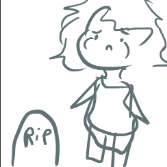-
Popular Topics
-
Topics
-
Recent Status Updates
-
Options
Options
-
It's been fun lotc, we out (for good this time)
Joining @Endershadow292in retirement heaven
-
magic is for chumps, been here since 2014 and I have never had magic!!!
No Recent Status Updates -
Options


.thumb.gif.bf7147b6aa276d8f2c6f703273532769.gif)


.thumb.gif.31ccc16142e21b620ad6c6f6da6545e3.gif)








Recommended Posts